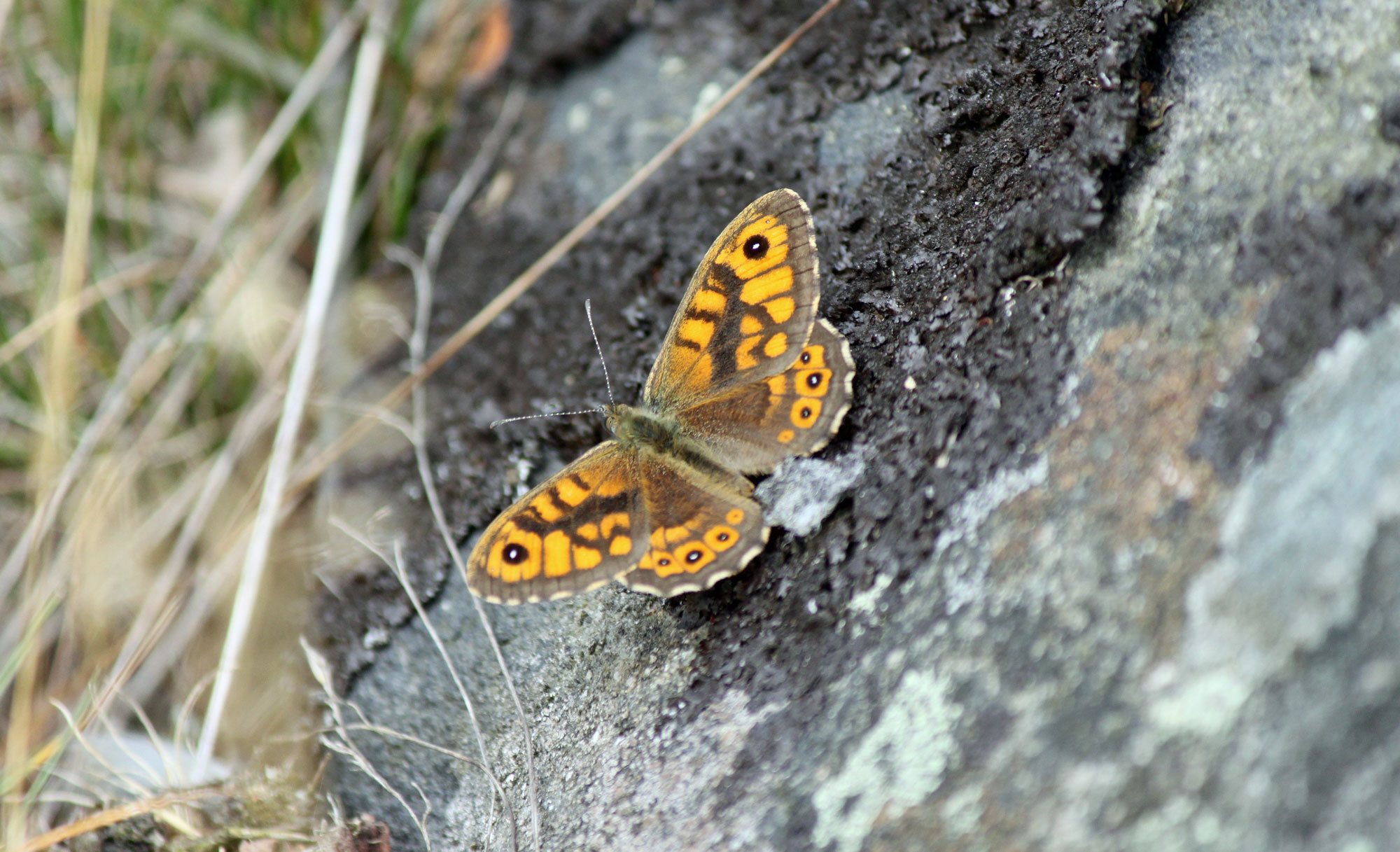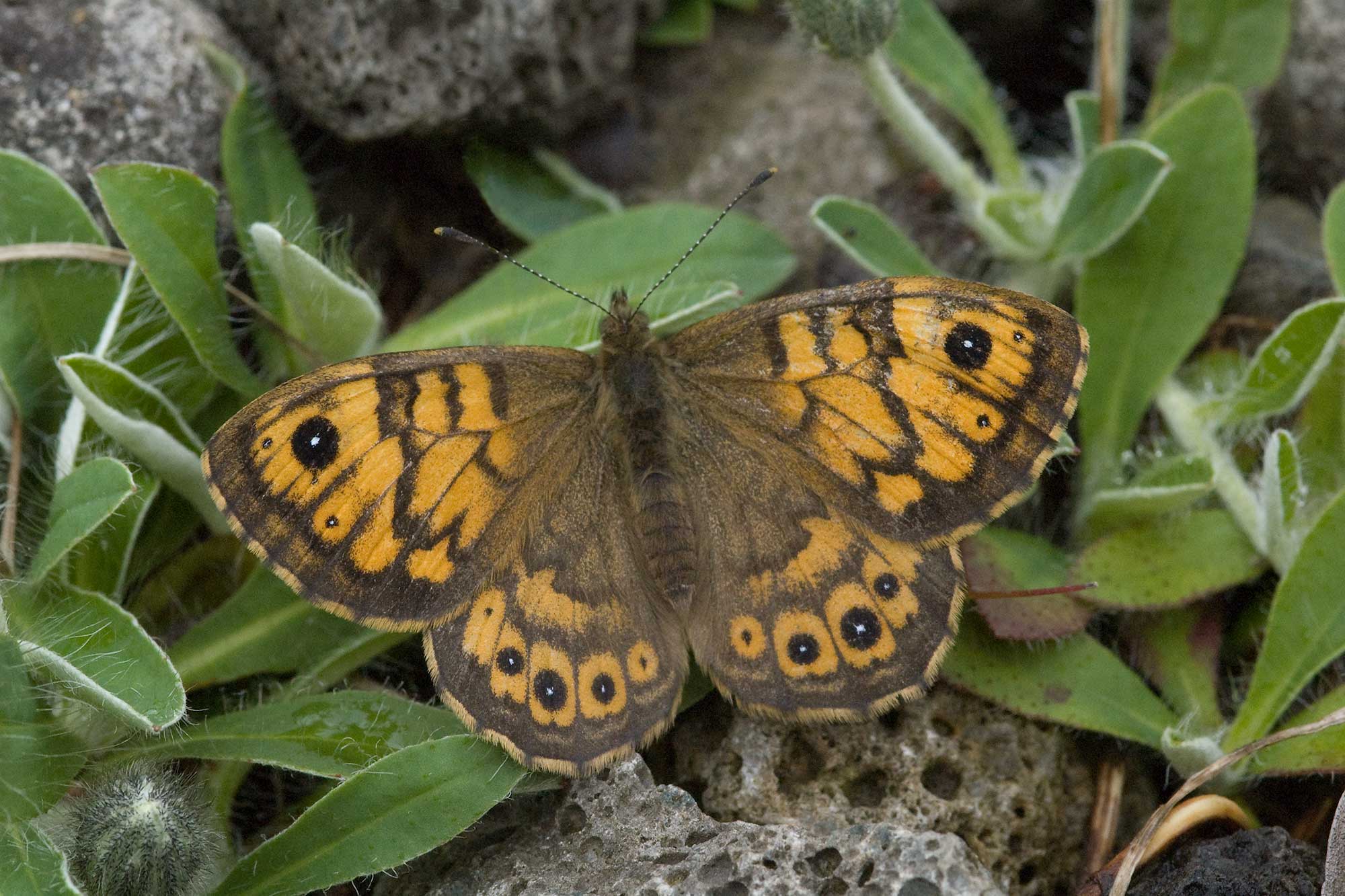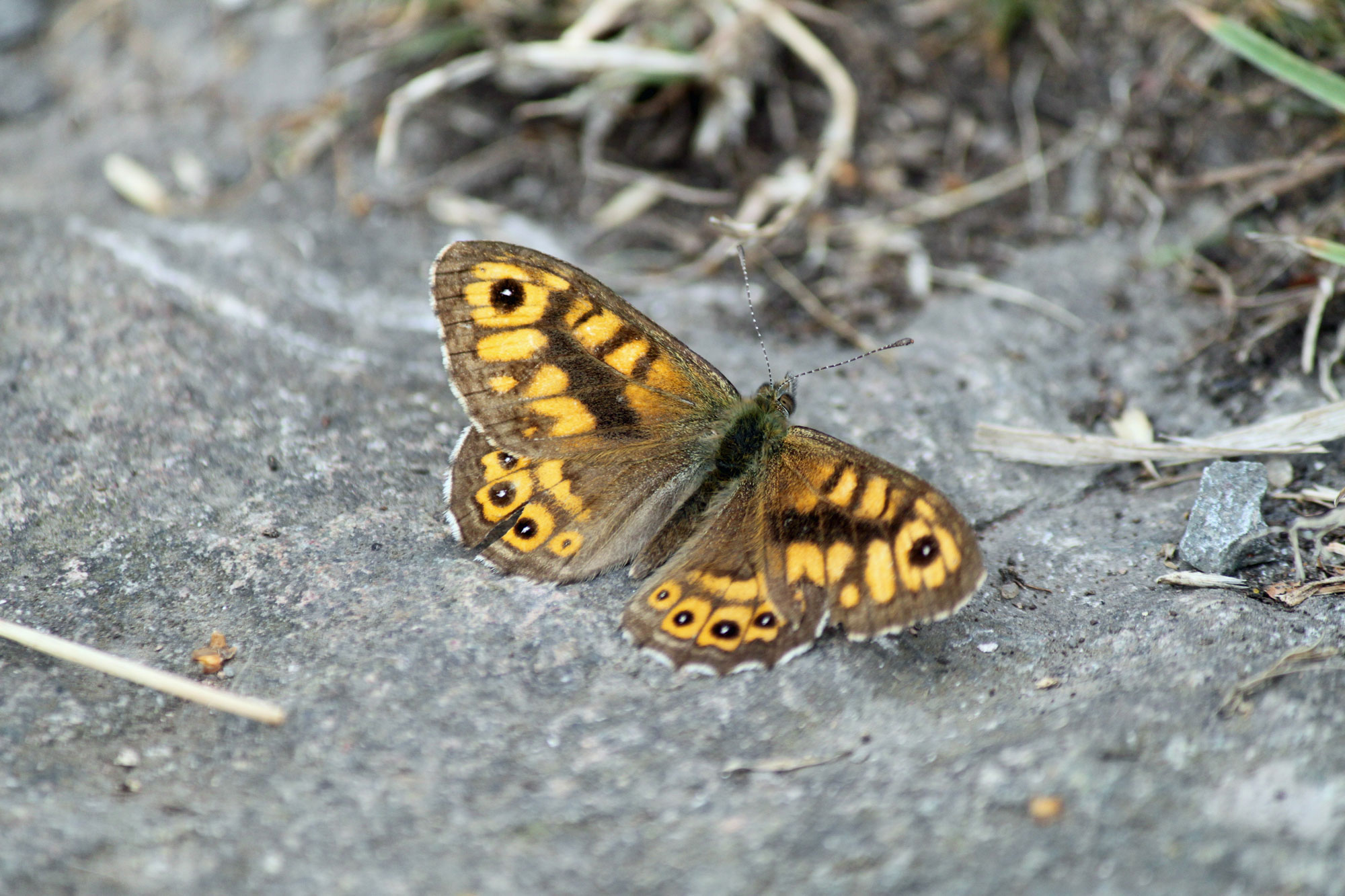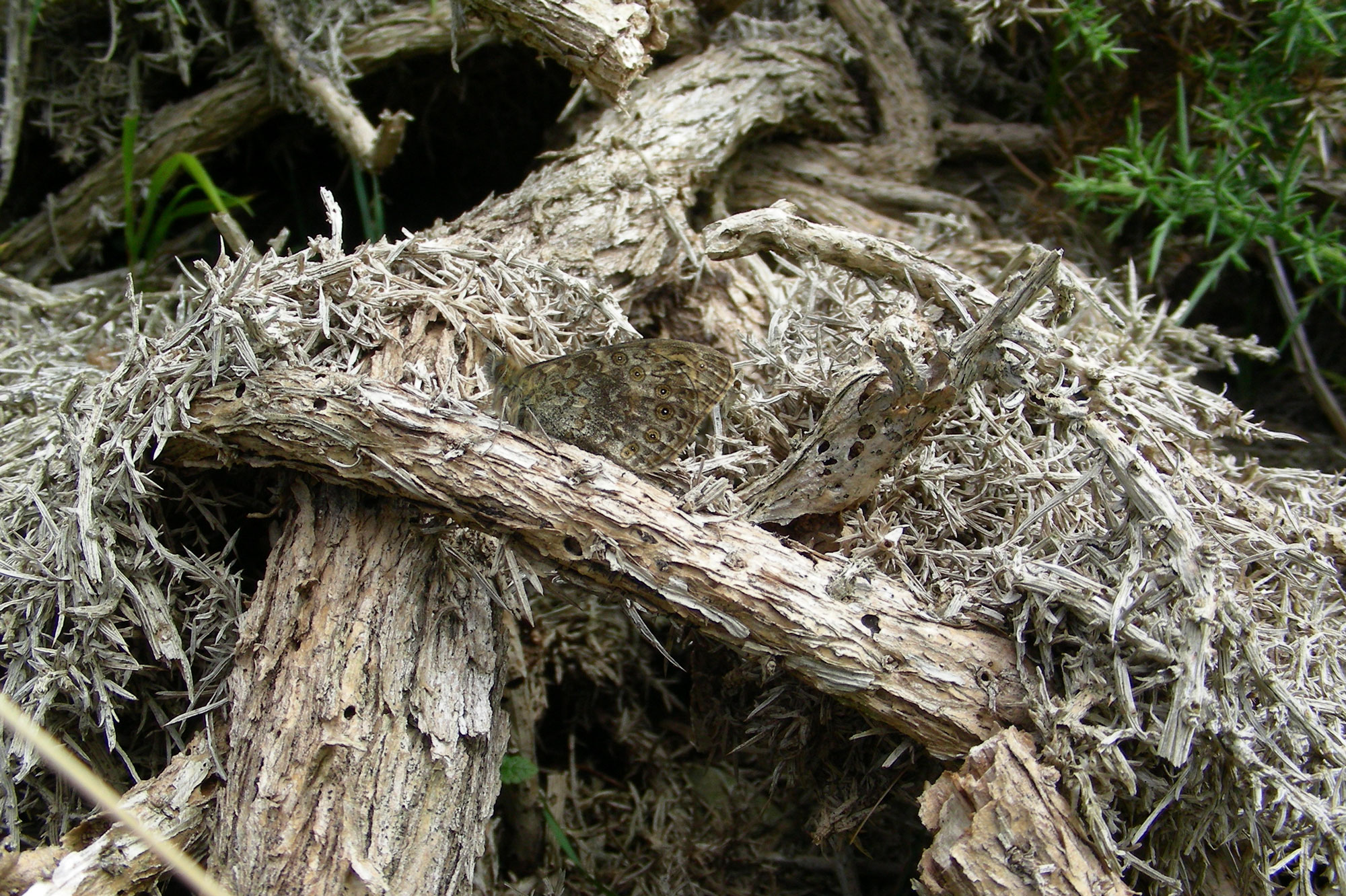
Wall Lasiommata megera
Habitat
The Wall has shown a dramatic decline in recent years, and although faring better in coastal regions, it has almost disappeared from central and eastern England. Records for the East Midlands have been very poor during the last few years. It prefers hot, sun-baked ground, and inland it is found on rugged open terrain, unimproved grassland, wasteland and in abandoned quarries.
Identification
The Wall could be mistaken for a fritillary due to its colouration but is distinguishable by its bright eyespots and its characteristic dancing flight.
Flight times
There are normally 2 broods, ranging from May to June and July to September.
Food plants
Eggs are laid singly a wide variety of grasses such as Cock's-foot, Yorkshire Fog and Tor-grass.
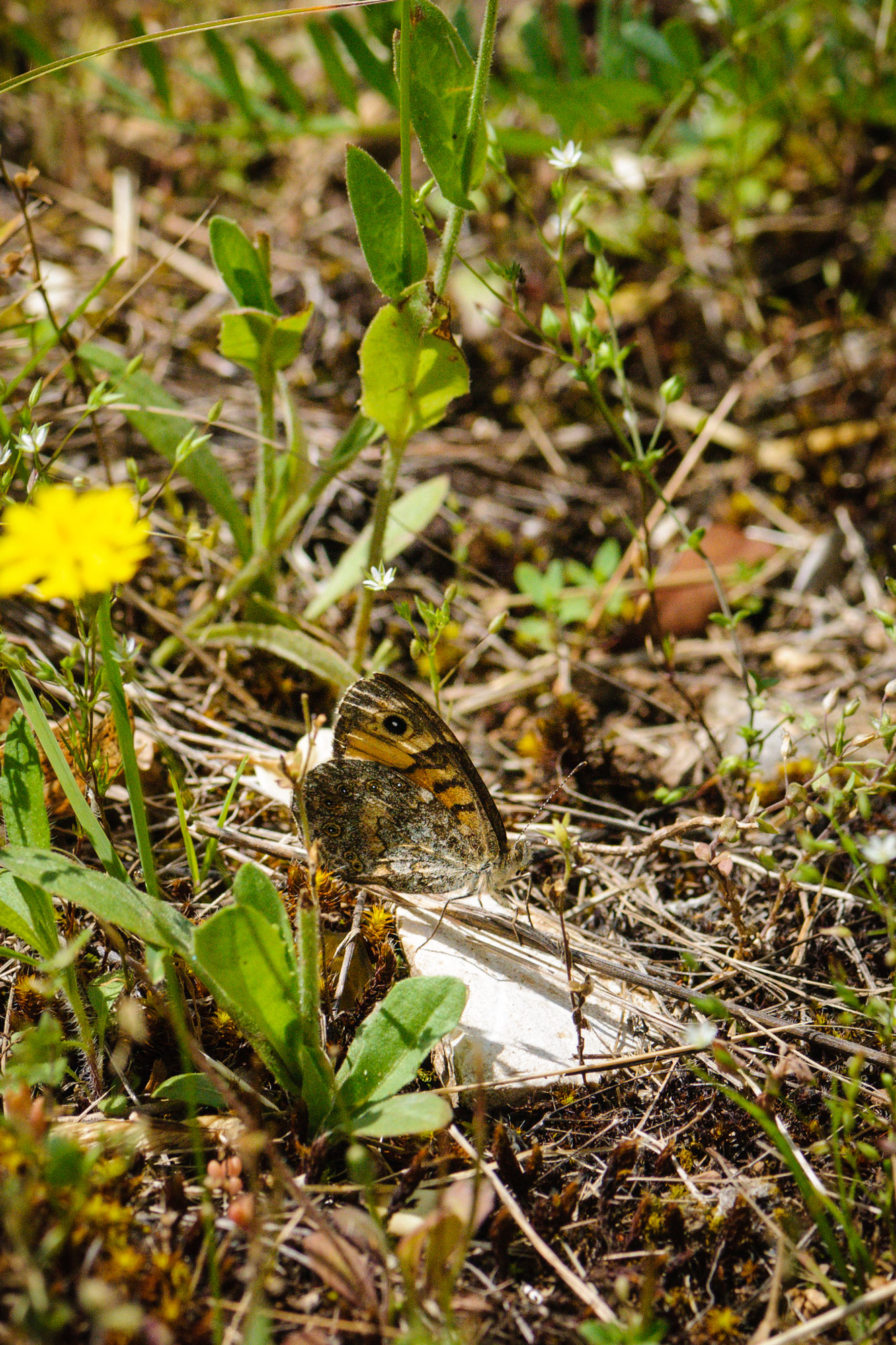
Distribution Maps
2005-2009
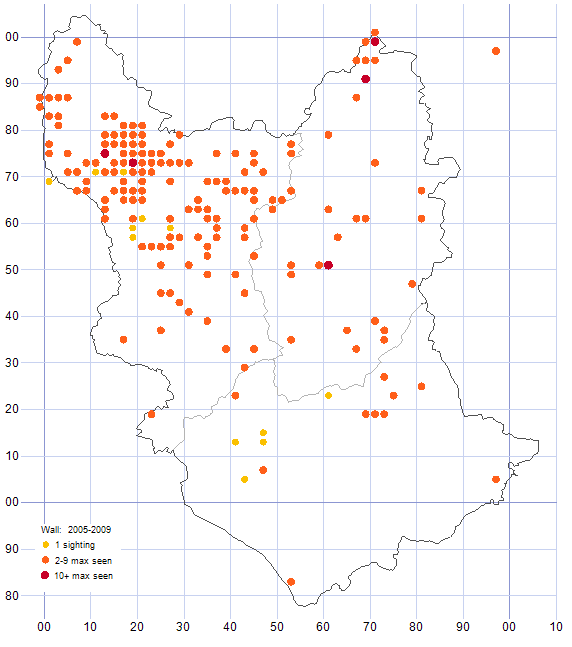
2010-14

2015-19
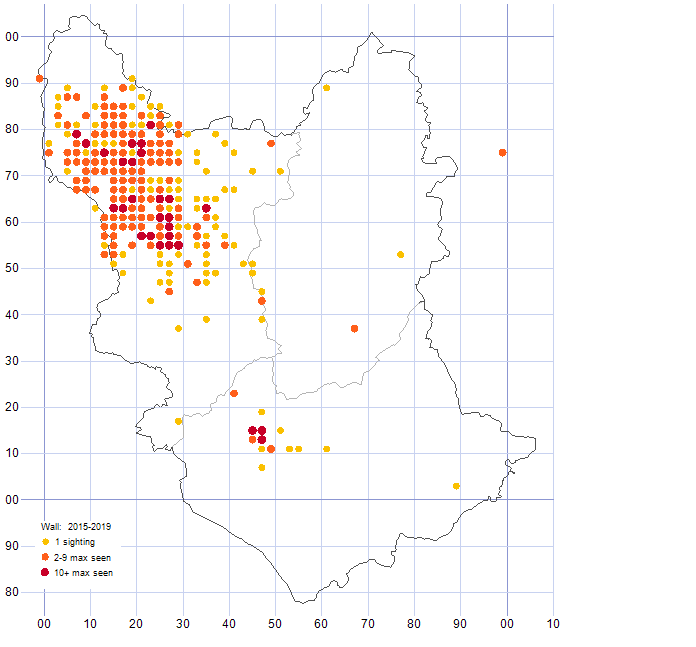
2005-2019

There has been a significant decrease during this fifteen-year period from all three counties, the stronghold remaining largely in NW Derbyshire.
2020-24
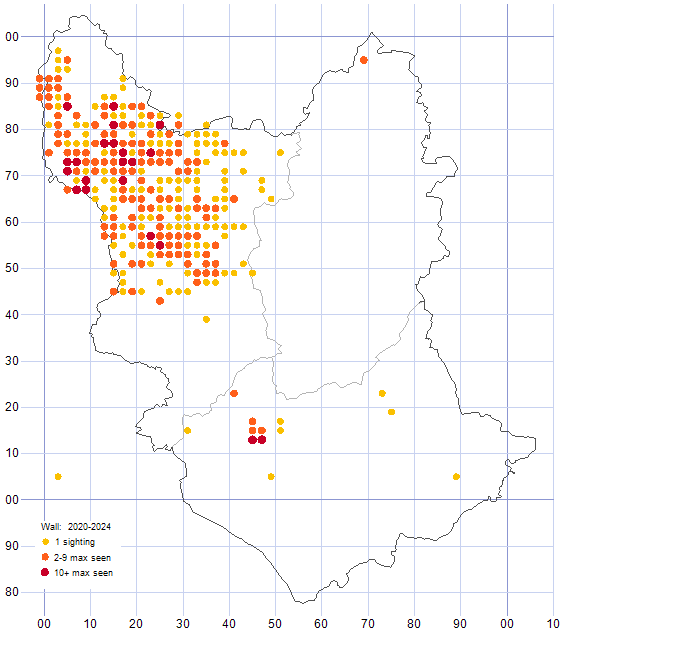
2010-24
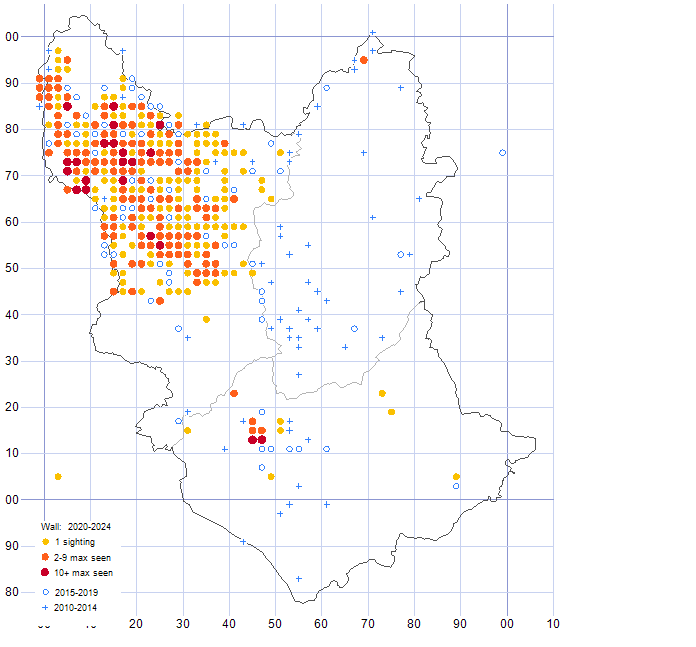
Changes in distribution between 2010-2014, 2015-2019 and 2020-24
Although this map confirms the sad decline of this species since 2010, the stronghold in the north of Derbyshire remains evident, and has even expanded slightly further south in the county, whilst a small population remains in parts of Leicestershire.
2015

| No of tetrads | 70 |
|---|---|
| First sighting | 13/05/2015 |
| Last sighting | 12/10/2015 |
2016

| No of tetrads | 63 |
|---|---|
| First sighting | 09/05/2016 |
| Last sighting | 05/10/2016 |
2017
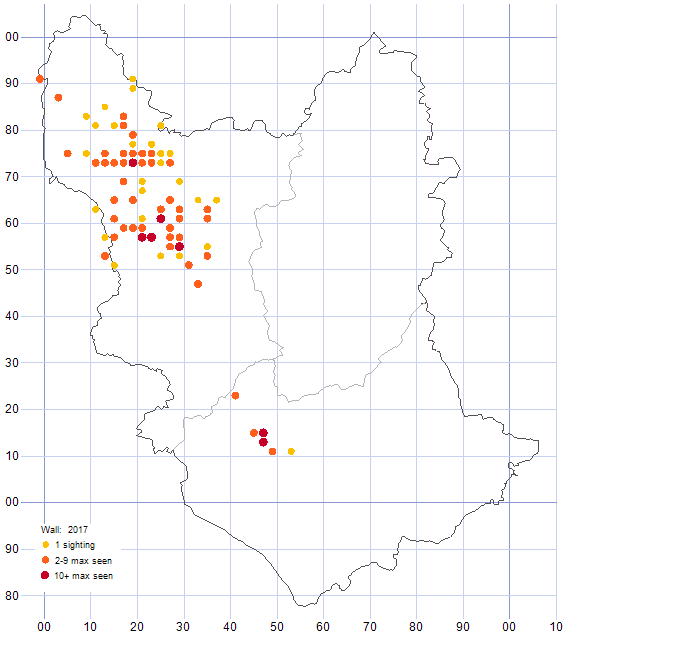
| No of tetrads | 76 |
|---|---|
| First sighting | 22/04/2017 |
| Last sighting | 11/10/2017 |
2018
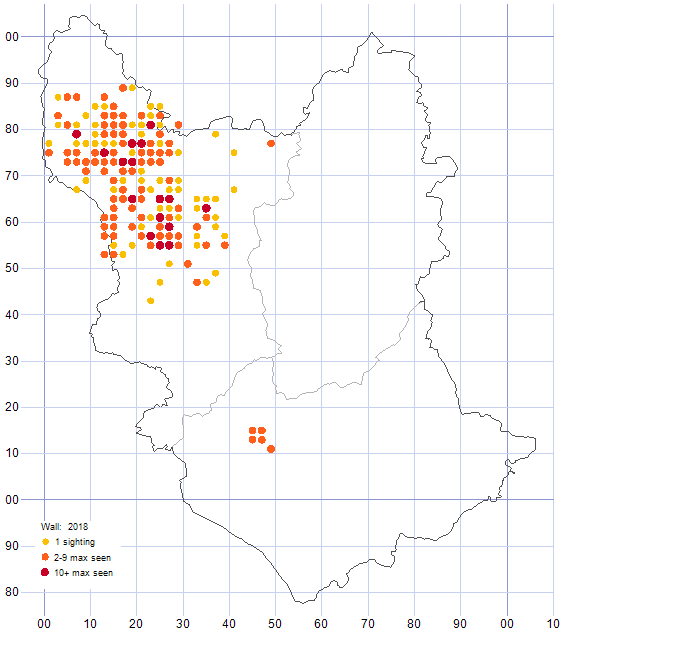
| No of tetrads | 162 |
|---|---|
| First sighting | 03/04/2018 |
| Last sighting | 22/10/2018 |
2019

| No of tetrads | 162 |
|---|---|
| First sighting | 31/03/2019 |
| Last sighting | 06/10/2019 |
2020
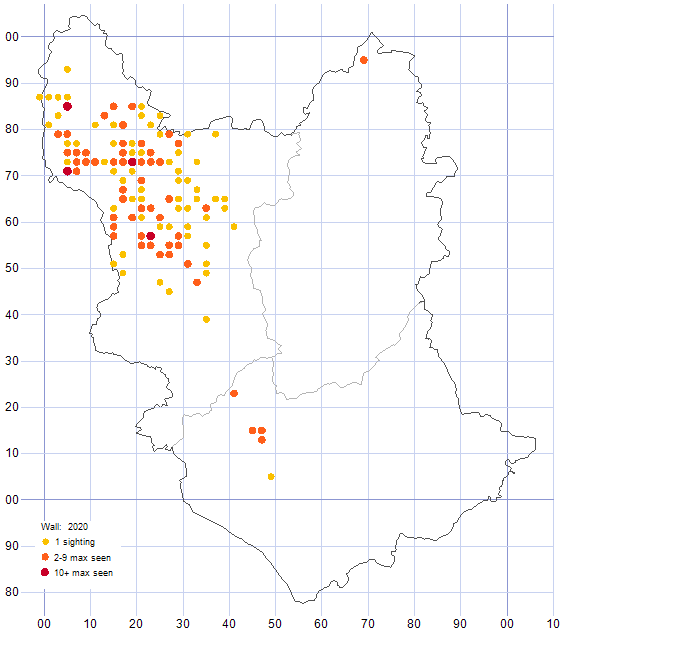
| No of tetrads | 117 |
|---|---|
| First sighting | 25/04/2020 |
| Last sighting | 22/09/2020 |
2021
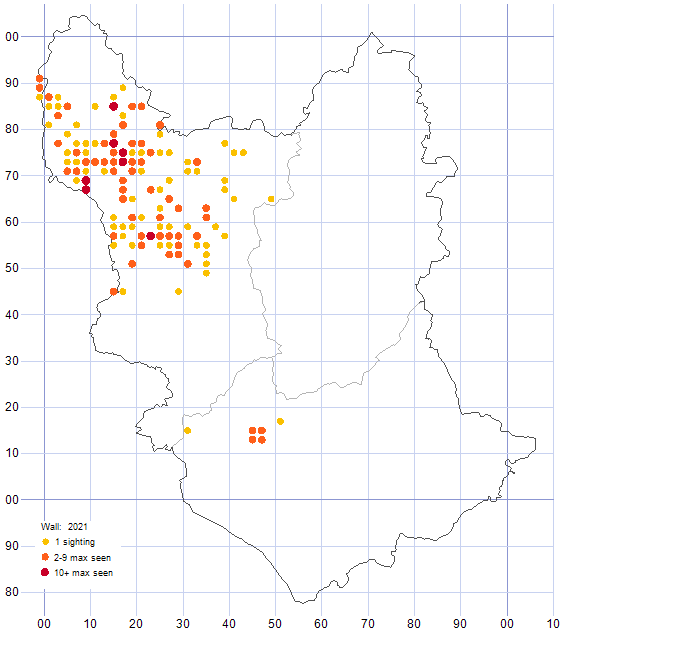
| No of tetrads | 127 |
|---|---|
| First sighting | 30/03/2021 |
| Last sighting | 26/09/2021 |
2022
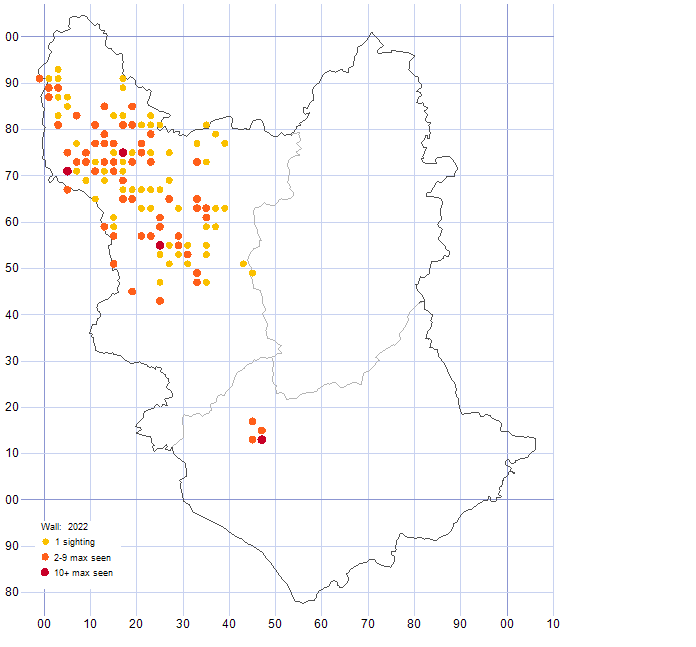
| No of tetrads | 121 |
|---|---|
| First sighting | 30/04/2022 |
| Last sighting | 26/09/2022 |
2023
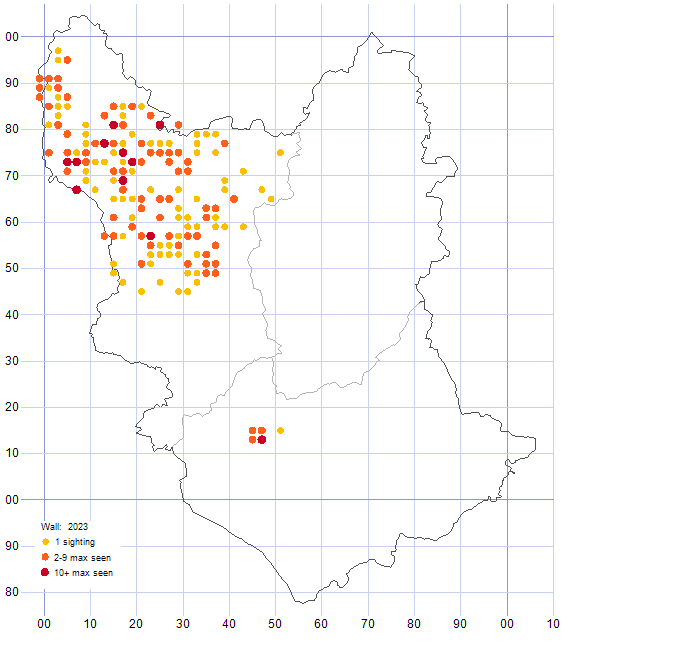
| No of tetrads | 157 |
|---|---|
| First sighting | 01/05/2023 |
| Last sighting | 27/09/2023 |
2024
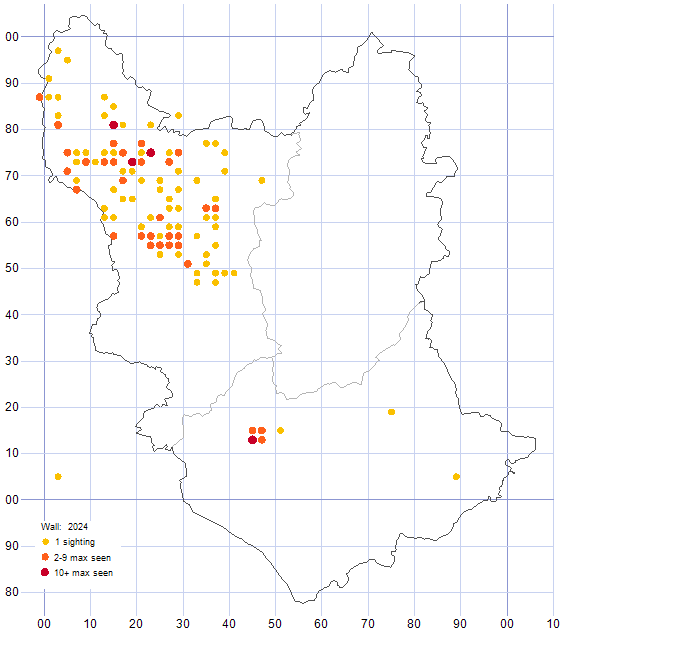
| No of tetrads | 103 |
|---|---|
| First sighting | 30/04/2024 |
| Last sighting | 28/09/2024 |
